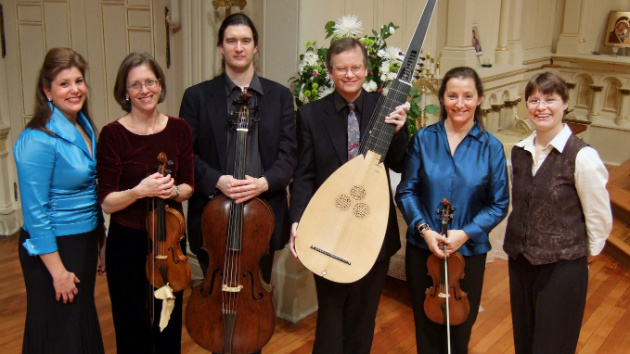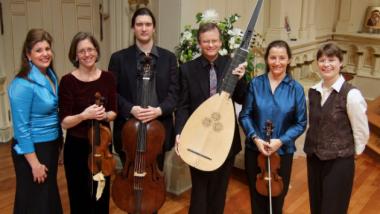
Imagine a timeline inscribed on paper that starts in the 1700s and extends to the present day. Fold the paper precisely in half, with the polar time periods meeting: You will have performed a now-and-forever representation of Voice of Music.
The early music chamber ensemble founded in 2007 by Hanneke van Proosdij and David Tayler offers concerts and recordings of music composed before 1800 played on period instruments for contemporary audiences. Educational programs provide training for children, adults, and talented young professionals. Voices of Music’s free digital library documents San Francisco’s cultural history, the nonprofit’s concerts, and an extensive archive of educational videos.
Now picture this: Videos made by VOM and posted on YouTube received roughly 4 million views in the age range 18-34 and 20 million views overall in 2015.
“I don’t know if I can explain it,” says van Proosdij, about the early music videos’ sensational popularity with young people. “We started them early on. We felt that for an organization today, it’s important to be on the Internet. If you get one viral video, people will come to see the rest.” An early example from 2008, their Pachelbel Canon in D Major, has been viewed 7,364,425 times.
In some ways, the phenomenon needs no explanation. Although the videos leave visual ornamentation to the music and are thus devoid of Hollywood-style CGI (computer-generated imagery), they are nonetheless impressive. Originally shot with one camera and now using eight, live concert closeups reveal an organist’s feet on the pedals, the intricate bowing of a violin player, or the intimate facial signaling and body language of the conductor-less performers. “In the Baroque (era), they didn’t have conductors standing in front and waving their arms around,” says Tayler. “Maybe the role of the individual performers and the sound of the original instruments is what attracts an audience.”
Tayler is on to things fundamental to the group’s core. VOM’s devotion to historical sources, quality, and the individuality of the performers is apparent not only in the videos and album recordings, but in the assumptions of van Proosdij. “It has to be top quality, otherwise, what’s the point?” she asks, rhetorically. “The idea with the videos is not to tell a story with some music in the background but to show that each musician has a voice. That’s how we make music: It’s different every night. You see that we’re interacting and it’s compelling to people. That’s why it’s important to be onstage live. It’s vital to perform and hear music live.”
“[Open Source music is] going to have a big boom in the next 10 years. There’ll be all this great stuff that people can listen to for free. Teachers and students will use it all the time. Anyone can download it and study it. Or just listen to it for fun.”
Admittedly, launching themselves onto social media platforms now would be much more difficult than it was eight years ago when they began, says van Proosdij. “We’d be a needle in the haystack if we were just starting. You have to change even before the times, not just with the times.” And audiences in concert halls continue to gray, a conundrum that remains a puzzle. “Early music is not a stuffy thing,” van Proosdij says. “And the younger generation audience is adventurous, but getting them to the concert hall is another thing. It’s not ticket price: We offer student tickets for five dollars.”
The online offerings are free. Partially for that reason, VOM followers of all economic levels are located in Mexico, Brazil, Asia, “and everywhere,” van Proosdij says. Beyond the general public, the educational videos that highlight important works in music history are most often used by colleges and conservatories.
“Music geeks” and music experts are attracted to the group because of elements such as the Vivaldi score used for “Virtuoso Italian Concertos,” the upcoming concerts, which will be performed Dec. 17-20 at four Bay Area venues. Unlike other modern interpretations that have “allowed alterations to creep in,” Tayler says, VOM is using a manuscript supervised by Vivaldi. “The original ‘slur here, trill there’ will be preserved for the next generation,” he says. “Once we do this edition and put it online, it stays there and nobody has to pay a musical toll to listen to it.”
The mention of an Open Source approach to music launches Tayler’s rocket. “It’s going to have a big boom in the next 10 years,” he predicts. “There’ll be all this great stuff that people can listen to for free. Teachers and students will use it all the time. Anyone can download it and study it. Or just listen to it for fun.”
And staying true to form, VOM is already exploring virtual reality. “I’ve seen a video made with six cameras, embedded in a string quartet,” says Tayler. “It’s like you’re sitting amid them. As a student, I would have loved to be able to look around at other musicians while I practiced.”

